Tomb Raider: The New Beginning of an Old Story
History

I don’t think there’s a single gamer in the world who doesn’t know Lara Croft. Lara appeared for the first time in 1996 in Tomb Raider for the Sega Saturn, and since then she has become a well known and well-loved character. It’s also worth mentioning that Lara was one of the first female video game protagonists at a time when the industry was only starting to make the first steps in attracting female gamers. Yet, it was also a period when the consumer market was dominated by male gamers, so to compromise and attract the majority of players Lara was designed to be over-sexualized. She wore little clothing and the size of her breasts would realistically never allow her to perform all of the stunts she executes in the game.
 Still, Lara has become a popular character not only among male players but female players as well. So Core Design, the developer of the Tomb Raider series, started to produce sequels (from then on mostly designed for the PlayStation). New sequels were intended to be released annually, but the schedule became enough of a strain on the developers that in the fourth sequel, Tomb Raider: The Last Revelation, the developers decided to kill Lara off. But either because of the negative reaction of the fans or because they realized that the franchise still had earning potential, Core Design continued to produce the Tomb Raider games, simply setting the stories before the fourth game’s timeline.
Still, Lara has become a popular character not only among male players but female players as well. So Core Design, the developer of the Tomb Raider series, started to produce sequels (from then on mostly designed for the PlayStation). New sequels were intended to be released annually, but the schedule became enough of a strain on the developers that in the fourth sequel, Tomb Raider: The Last Revelation, the developers decided to kill Lara off. But either because of the negative reaction of the fans or because they realized that the franchise still had earning potential, Core Design continued to produce the Tomb Raider games, simply setting the stories before the fourth game’s timeline.
The last game developed by Core Design, Tomb Raider: The Angel of Darkness, which came out for PlayStation 2 and Windows, was supposed to be a beginning of a trilogy. But because of the numerous glitches and terrible controls, the game was a total failure. It received negative reviews from professional critics and casual players alike.
Three years later, Crystal Dynamics picked the series. They created several new games, but were criticized for reusing old ideas. Those opinions was probably the reason that Square Enix announced a complete reboot of the franchise when they acquired it in 2010. On March 5th of 2013, an absolutely new game about Lara Croft saw the light of day.
As a gamer, I’ve had a decent share of experience with the series but have never actually been a fan of it. On the contrary, every Tomb Raider game I previously played left me unsatisfied. The controls were bad, the designs were repetitive, the camera was always fixing in weird angles, and it was difficult to see a thing. Not to mention that sometimes the games would simply freeze in the middle of the level and I would have to restart my console and replay from the beginning. As a result, I have never finished a single Tomb Raider game. So when the reboot of the series was announced, I wasn’t even a little bit excited.
But my opinion changed when I saw the new design of the main character. Lara little resembled her predecessors. She wasn’t the sex videogame symbol she used to be, but simply a young woman dressed in a casual outfit suitable for long ruin explorations. Another thing which attracted me after watching the trailer was the fact that Lara seemed to have gotten a personality of a real human being, instead of staying the ruthless killing machine she was portrayed as in earlier games.
Plot
The plot of the game starts with Lara’s very first expedition. Together with Dr. James Whitman, a famous archaeologist, and their team traveling on board of the ship Endurance, Lara is determined to find the lost Japanese kingdom Yamatai, ruled by the queen Himiko. According to the legends, Himiko is a very powerful shaman able to control storms. While attempting to find the lost kingdom, Lara is pointed toward the Dragon Triangle, a place with a reputation for causing ships and airplanes to go missing. After entering the Dragon Triangle, the Endurance is hit by a violent storm and crashes into an unknown island.
After the crash, Lara finds herself washed up on shore and is immediately captured by a strange man. He tries to use Lara as a sacrifice for the Sun Queen. But Lara escapes, determined to find the rest of the people from her team who survived the crash.
But her friends aren’t the only thing Lara finds on the island. The legends about the queen Himiko turn out to be more truthful than anyone anticipated, and Lara is forced to fight the cult of the Sun Queen when they kidnap Lara’s best friend, Samantha Nishimura, who they suspect is the descendent of the legendary ruler of Yamatai.
Traveling around the island and fighting against the cultists, Lara is given an opportunity to find out the truth about the queen Himiko and the island. She learns about survival and is faced with hard decisions which sometimes, even if you feel they are right, have unpredictable consequences.
New Lara
As I mentioned earlier, Lara is portrayed as a simple woman who is placed in extreme conditions. That’s where the emotional side of the game comes from: showing the real struggle of
aperson forced to do regrettable things to survive. Camilla Luddington, the English actress portraying new Lara, in an interview included in the game extras, admitted that she herself didn’t expect to be so emotionally attuned to the character she played. “When I got this role at first, I did not even know I would be crying so much”, Camilla said, “I just thought I’d be kicking butt.”
But neverless, even while being scared, even while doubting her own abilities, Lara pushes it away and continues to move forward despite the fear. In my eyes, that was exactly what made the character a strong woman and a strong human being. And it was also exactly what made the character so believable.
Gameplay
At first I worried that I would soon get tired of all the quick-time events, but as it turns out the gameplay is really well balanced. There are quick-time events, yes, but there are also some great exploration sections and platforming, stealth, and puzzle mechanics. Altogether, the gameplay was strong enough to hold my interest without interfering with the plot.
There’s no character leveling, but every time you gain enough experience you’re rewarded with an ability point to spend on learning a new move or improving an ability you already have. During the game you can also collect salvage which allows you to upgrade your weapons. It was a good way of improving the character over the course of the game which, in my opinion, was also realistic and matched the general gameplay.
There were several aspects I didn’t enjoy. For example, there was a lot of running around each location and collecting things. While most of it is intended for extra experience, some of the prizes are access to extra galleries with concept art or character designs. Years ago, before the Internet, the opportunity to see concept art as the reward for collecting items may have been a great addition to a game. But now, when you can simply find everything online, it has become somewhat unnecessary. I also think the entire mechanic of collecting artifacts could have been more developed – some of the artifacts could have been collected for clues to open secret locations or as a device of telling a side story about the events unfolding on the island, similar to the journals. Instead, it was nothing but a series of platforming sections for some extra experience. Eventually this procedure became redundant for me, and near the end of the game I simply gave up on it.
Another thing I would have liked to see in the game was the development of secondary characters. Lara’s interaction with them is minimal, so you don’t have time to get attached to them. And while it’s really easy to empathize with Lara herself, I finished the game knowing little about the lives of people who were supposedly important to her. Of course it was possible to find some details about their lives by finding their personal journals, but it didn’t feel as personal as some simple dialogue would have. I also understand that the genre of the game doesn’t lend itself to finding out everything about every secondary character, but at least the most important ones would surely have benefited from some extra lines.
To buy or not to buy…
Buy. Because even those minuses didn’t affect my general opinion on the game. It was a positive experience and I enjoyed it, even if I have never been an actual fan of the series. It wasn’t the greatest game I’ve ever played, and it didn’t have the strongest plot, but it was good enough to keep me interested and motivate me to finish it. Even if I most likely will never decide to play through the game again, I’m pretty sure that it will merit a sequel or two and deliver a much-needed breath of fresh air to the Tomb Raider franchise.
Developer: Crystal Dynamics; Publisher: Square Enix; Directors: Noah Hughes, Cory Barlog;
Writer: Rhianna Pratchett; Platforms: Microsoft Windows, PlayStation 3, Xbox 360
Release date: 5 March 2013; Genres: Action-adventure, platform.
Author: Rinienne
Rin created our website logo and many other graphics that we’ve used throughout our social media platforms. They’re also an avid gamer and gives us insights into all things gaming. They’re also heavily involved in our ongoing eBook project.
Help support independent journalism. Subscribe to our Patreon.
Copyright © The Geekiary
Do not copy our content in whole to other websites. If you are reading this anywhere besides TheGeekiary.com, it has been stolen.Read our



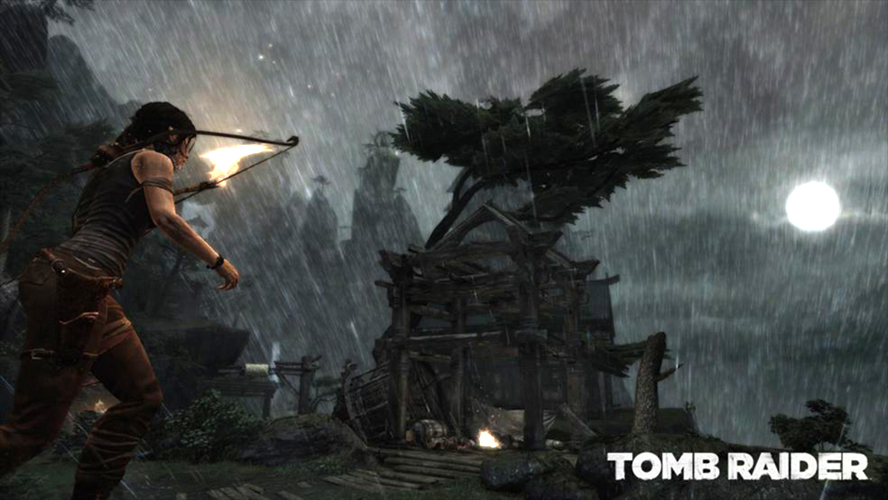
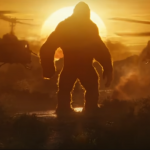
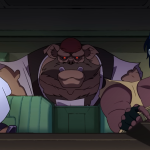
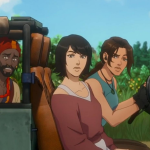
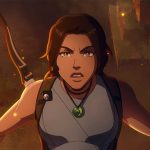
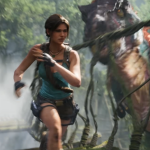
It’s a good point you made about the collectibles unlocking a secret passage. It would have been good if they had unlocked additional tombs. I actually expected that to happen when I finished collecting the GPS thingers but it didn’t. Good review 🙂
If I’m not mistaken GPS caches point two secret journals (well, at least something you keep gathering around the island unlocks them)… I have only found one, because in the end I simply gave up on gathering. Plus two journals isn’t a great reward for all that running and jumping. And thanks =D
Yeah i found one of the journals you are talking about but I dont remember them being related to the GPS cashes. Anyways, you’re right, it would be nice if they unlocked something bigger. Maybe in the sequel 🙂